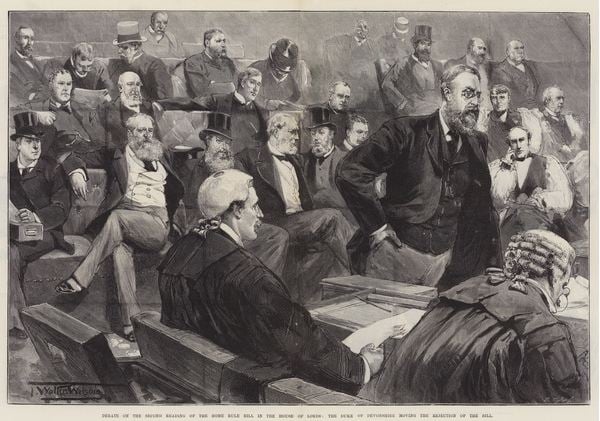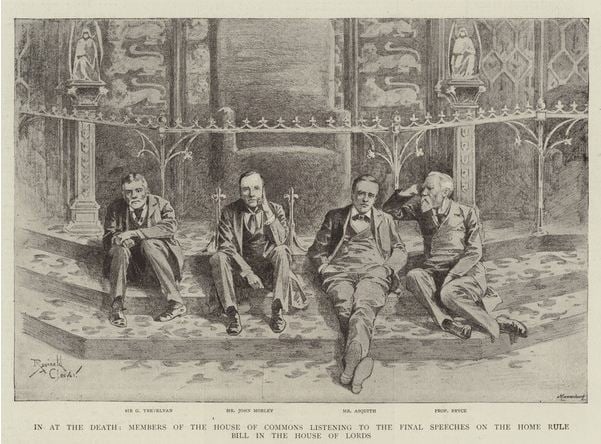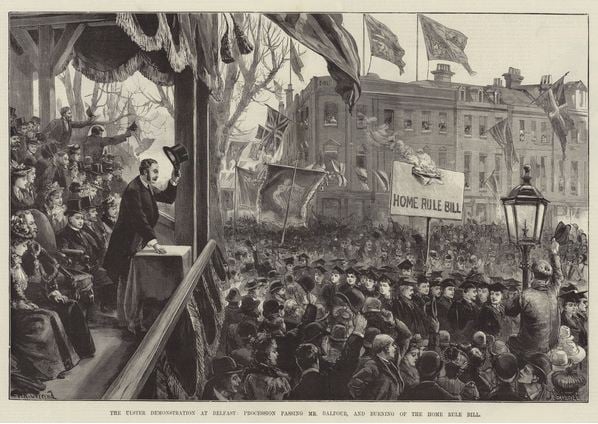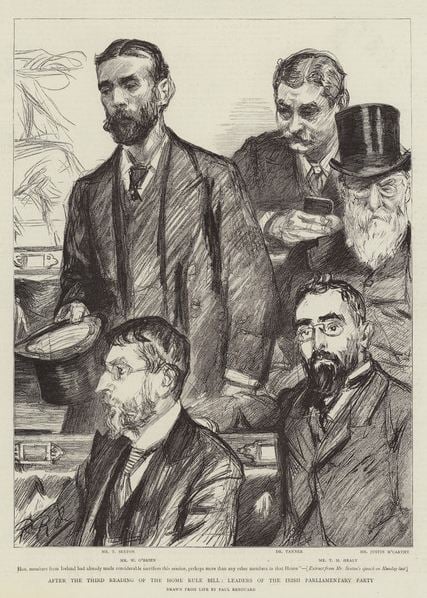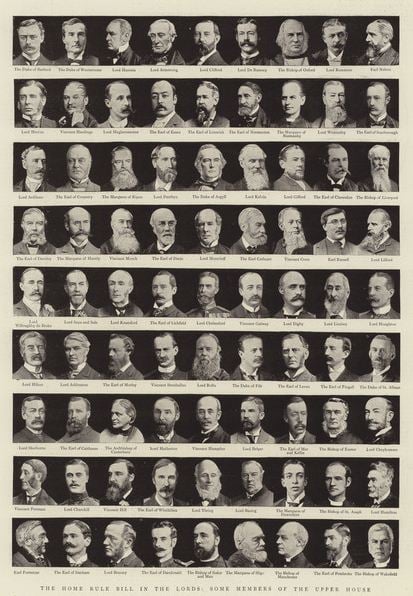
Ireland’s Home Rule Debate: 100 years
The Home Rule movement emerged in Ireland as a backlash against the the 1801 Act of Union with Britain. Home Rule was the name given to the process of allowing Ireland to have more say in how it was governed – freeing them from the rule of London and thus appeasing those in Ireland who wanted to have more home derived power.
It came to dominate British politics from 1885 to the start of World War One; as one English journalist visiting Ireland in 1893 (the year of the second Home Rule Bill) recorded:
‘self-government was the only topic of conversation in hotels, railway carriages, tramcars, and on the steps of the temples, at the corners of the streets, in the music halls.’
Take the imaginative leap back to a period in Ireland’s history when the establishment of a Home Rule parliament in Dublin was at the height of discussions, via a timeline with detailed engravings from Look and Learn’s London Illustrated Papers collection:
The Division in the House of Commons on the Irish Home Rule Question (engraving), Lucien Davis (1860-1951) / Private Collection / © Look and Learn / Illustrated Papers Collection / Bridgeman Images
- 1886:
The First Irish Home Rule Bill was defeated in the House of Commons and never introduced in the House of Lords. They saw the introduction of Home Rule as a means of reducing the power of London, first in Ireland – and then where else?
Debate on the Second Reading of the Home Rule Bill in the House of Lords, the Duke of Devonshire moving the Rejection of the Bill (engraving), Thomas Walter Wilson (1851-1903) / Private Collection / © Look and Learn / Illustrated Papers Collection / Bridgeman Images
- 1893:
The Second Irish Home Rule Bill was passed in the House of Commons, but defeated in the House of Lords, where members strongly opposed the movement.
In at the Death, Members of the House of Commons listening to the Final Speeches on the Home Rule Bill in the House of Lords (engraving), Reginald Thomas Cleaver (c.1870-1954) / Private Collection / © Look and Learn / Illustrated Papers Collection / Bridgeman Images
- 1910:
Two general elections were held in this year, with the Irish Nationalist MPs holding the balance of power and supporting the Government of the Liberal leader Asquith.
- 1911:
Edward Carson, the leader of the Irish Unionist Alliance, had been campaigning against Home Rule and spoke against it in the House of Commons. To demonstrate to Carson that the Unionists meant business regarding Home Rule, independent politician James Craig arranged a massive demonstration of Unionist Clubs and the Orange Order at his home in east Belfast, Craigavon House.
The Ulster Demonstration at Belfast, Procession passing Mr Balfour, and burning of the Home Rule Bill (engraving), William Heysham Overend (1851-98) (after) / Private Collection / © Look and Learn / Illustrated Papers Collection / Bridgeman Images
A huge rally was also held in the grounds of Balmoral in south Belfast, which was attended by Bonar Law, the leader of the Conservative Party expressing opposition to the Home Rule Bill. Over 70 MPs from Great Britain supported this event and it was attended by people from all across Ulster.
After the Third Reading of the Home Rule Bill, Leaders of the Irish Parliamentary Party (engraving), Charles Paul Renouard (1845-1924) (after) / Private Collection / © Look and Learn / Illustrated Papers Collection / Bridgeman Images
The Home Rule Bill in the Lords, Some Members of the Upper House, English photographer, (19th century) (after) / Private Collection / © Look and Learn / Illustrated Papers Collection / Bridgeman Images
The third Irish Home Rule Bill was passed under the Parliament Act after the House of Lords were defeated, but it never came into force due to the intervention of World War I (1914–18) and the Easter Rising in Dublin (1916).1912–14:
- 1920:
The fourth Irish Home Rule Act, which replaced the Third Act, was passed and implemented as the Government of Ireland Act 1920. It established Northern Ireland as a Home Rule entity within the United Kingdom of Great Britain and Northern Ireland, and attempted to establish Southern Ireland as another but instead resulted in the partition of Ireland and Irish independence through the Irish Free State Constitution Act 1922.
It just goes to show what a struggle it is to alter politics, and how it may take a while but persistence can eventually pay off..!
Sources
Home Rule and Ireland, Historylearningsite.co.uk, Accessed 18/05/16
Find out More
View all images about the Irish Home Rule
View all images from the London Illustrated Papers’ collection


